
The Majestic Wilderness of Custer State Park
Explore the untamed beauty and rich history of Custer State Park in South Dakota, a premier destination for wildlife viewing, scenic drives, and outdoor adventures.
Custer State Park in South Dakota is a gem of the American Midwest. This sprawling park covers over 71,000 acres and offers stunning landscapes, diverse wildlife, and numerous outdoor activities. It's named after Lieutenant Colonel George Armstrong Custer and is one of the largest state parks in the United States. Visitors to Custer State Park can expect to see a variety of animals, including bison, pronghorn antelope, and elk. One of the park's main attractions is the annual Buffalo Roundup, where visitors can watch cowboys and cowgirls herd a massive buffalo population. The park also has scenic drives like the Needles Highway that wind through unique granite formations and provide breathtaking views. Hiking enthusiasts will find plenty of trails to explore, from easy walks to challenging climbs. The Black Elk Peak trail is a favorite, offering a climb to the highest point east of the Rockies. For those interested in fishing, the park's lakes and streams are well-stocked with fish. Camping is also a popular activity, with several campgrounds offering a variety of amenities. Custer State Park is also steeped in history. The Peter Norbeck Scenic Byway takes travelers through historic sites and offers insights into the area's past. The park's Visitor Centers provide educational exhibits and information on the region's natural and cultural history. Whether you're looking for adventure, relaxation, or a bit of both, Custer State Park is a destination that promises to leave a lasting impression.
Local tips in Custer State Park
- Visit in late September to experience the Buffalo Roundup.
- Drive the Needles Highway early in the morning to avoid traffic and enjoy the best lighting for photos.
- Pack layers of clothing; temperatures can vary greatly throughout the day.
- Reserve campsites in advance, especially during peak seasons.
- Bring binoculars for better wildlife viewing.
The Majestic Wilderness of Custer State Park
Custer State Park in South Dakota is a gem of the American Midwest. This sprawling park covers over 71,000 acres and offers stunning landscapes, diverse wildlife, and numerous outdoor activities. It's named after Lieutenant Colonel George Armstrong Custer and is one of the largest state parks in the United States. Visitors to Custer State Park can expect to see a variety of animals, including bison, pronghorn antelope, and elk. One of the park's main attractions is the annual Buffalo Roundup, where visitors can watch cowboys and cowgirls herd a massive buffalo population. The park also has scenic drives like the Needles Highway that wind through unique granite formations and provide breathtaking views. Hiking enthusiasts will find plenty of trails to explore, from easy walks to challenging climbs. The Black Elk Peak trail is a favorite, offering a climb to the highest point east of the Rockies. For those interested in fishing, the park's lakes and streams are well-stocked with fish. Camping is also a popular activity, with several campgrounds offering a variety of amenities. Custer State Park is also steeped in history. The Peter Norbeck Scenic Byway takes travelers through historic sites and offers insights into the area's past. The park's Visitor Centers provide educational exhibits and information on the region's natural and cultural history. Whether you're looking for adventure, relaxation, or a bit of both, Custer State Park is a destination that promises to leave a lasting impression.
When is the best time to go to Custer State Park?
Iconic landmarks you can’t miss
Black Hills National Forest
Discover the stunning natural beauty and rich history of Black Hills National Forest, a premier destination for outdoor adventures and wildlife enthusiasts.

Jewel Cave National Monument
Explore the stunning underground beauty and rich geological history at Jewel Cave National Monument, a must-visit natural wonder in South Dakota.
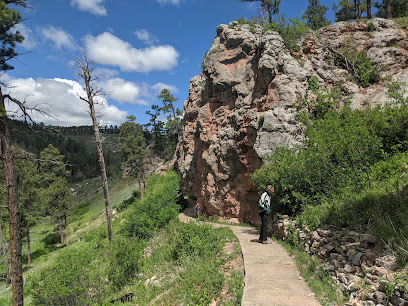
Needles Eye Tunnel
Experience the stunning Needles Eye Tunnel in Custer State Park, a breathtaking natural arch that captures the essence of South Dakota's beauty.
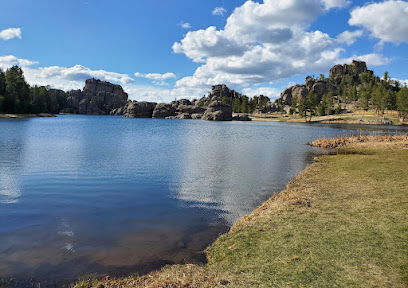
Custer State Park Visitor Center
Discover the beauty and adventure of Custer State Park at the Visitor Center, your gateway to exploring South Dakota's wild landscapes.
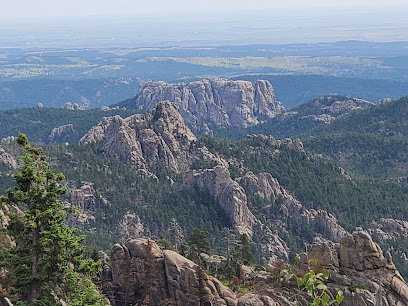
Custer State Park Resort
Experience the breathtaking beauty of Custer State Park Resort in South Dakota, where nature meets comfort and adventure awaits around every corner.

Buffalo Safari Jeep Tours
Discover the untamed beauty of Custer State Park with Buffalo Safari Jeep Tours, the ultimate adventure for wildlife lovers.
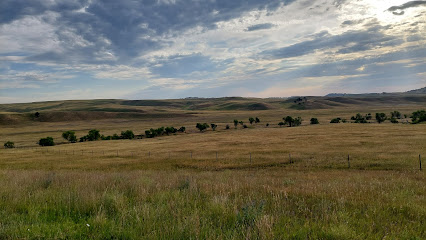
Custer State Park Wildlife Loop Road
Explore Custer State Park Wildlife Loop Road, a scenic drive filled with diverse wildlife and stunning landscapes in South Dakota's great outdoors.
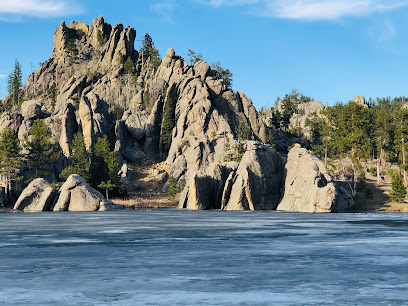
Four Mile Old West Town Museum
Explore the rich heritage of the American West at the Four Mile Old West Town Museum, a unique museum experience in Custer, South Dakota.
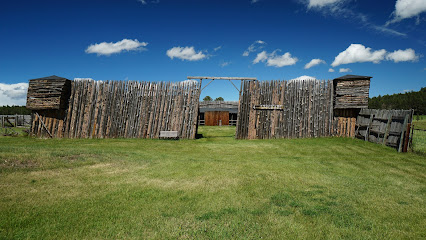
Welcome to Custer State Park Sign
Explore breathtaking landscapes and rich wildlife in Custer State Park, a historical gem of South Dakota perfect for outdoor adventures.
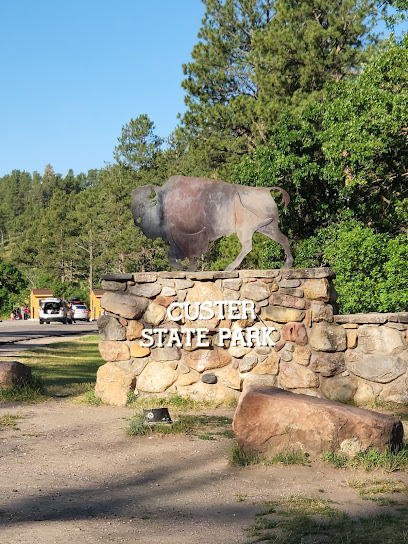
Gordon Stockade Historical Landmark
Explore the rich history of the Wild West at Gordon Stockade Historical Landmark, a must-see attraction near Custer State Park.
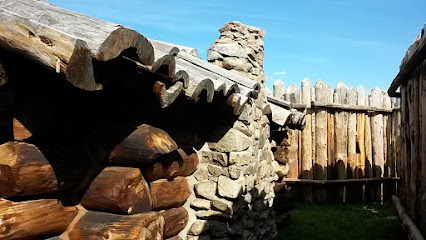
Custer State Park Mt Coolidge
Explore the breathtaking vistas and rich wildlife of Custer State Park's Mount Coolidge, a must-visit destination for nature lovers in South Dakota.
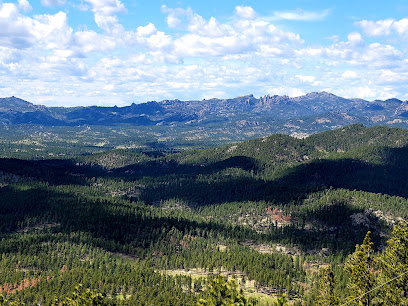
Sunday Gulch Trail
Explore Sunday Gulch Trail in Custer State Park, a breathtaking natural trail showcasing stunning granite cliffs and lush landscapes for all outdoor enthusiasts.
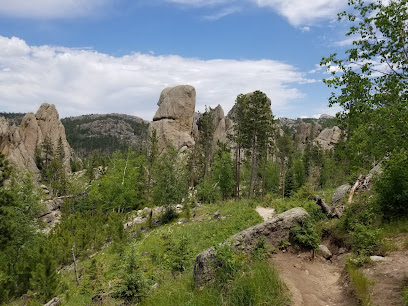
custer state park
Discover the breathtaking landscapes and rich wildlife of Custer State Park in South Dakota, a must-visit historical landmark for nature lovers.

Unmissable attractions to see
The Mammoth Site
Explore the extraordinary Mammoth Site in Hot Springs, SD, where ancient history comes alive through fascinating exhibits and remarkable fossil discoveries.
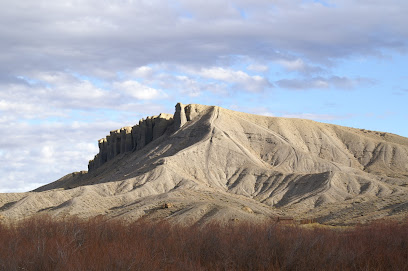
Indian Museum of North America
Discover the diverse cultural legacy of Native American tribes at the Indian Museum of North America, a captivating experience in Crazy Horse, South Dakota.
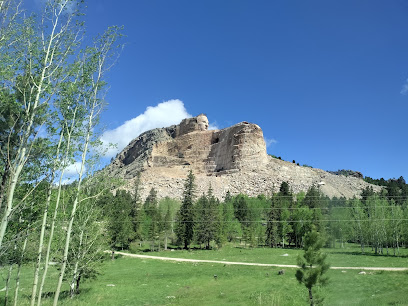
1880 Train - Hill City Depot
Discover the beauty of South Dakota aboard the 1880 Train, a historic journey through the scenic Black Hills.
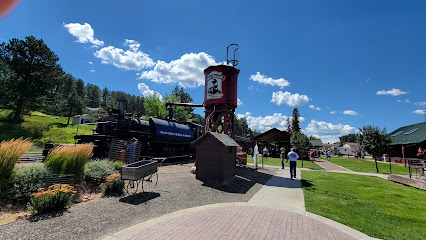
Cosmos Mystery Area
Discover the enchanting Cosmos Mystery Area in Rapid City, SD, where gravity defies logic and curiosity is rewarded with unforgettable experiences.
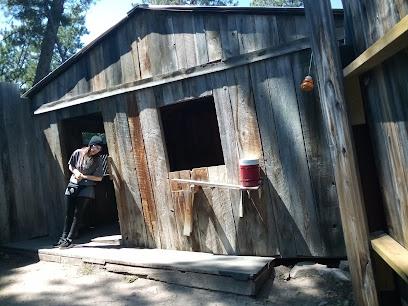
Ben Reifel Visitor Center
Explore the Ben Reifel Visitor Center for an unforgettable introduction to the breathtaking Badlands National Park in South Dakota.
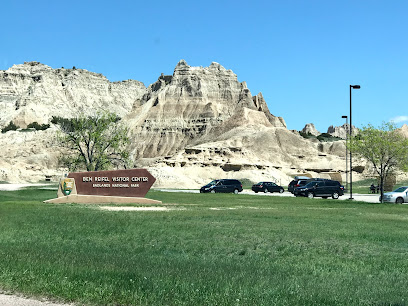
Cosmos Mystery Area
Experience mind-bending illusions and gravity-defying wonders at the Cosmos Mystery Area in Rapid City, South Dakota, a unique tourist attraction for all ages.
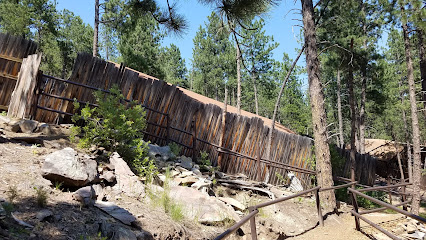
Wind Cave National Park Visitor Center
Explore the stunning Wind Cave National Park Visitor Center - your gateway to unique geological wonders and diverse wildlife in South Dakota's natural beauty.
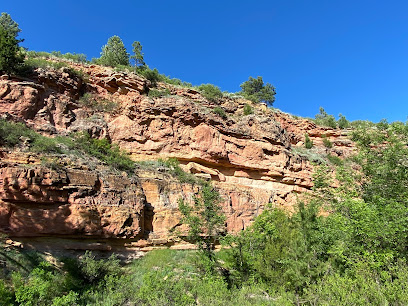
1880 Train - Keystone Depot
Discover the enchanting 1880 Train in Keystone, SD – a scenic journey through the Black Hills on historic steam locomotives.
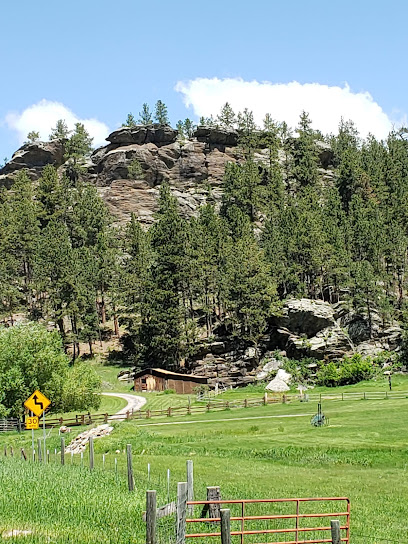
Norbeck Overlook
Discover the stunning Norbeck Overlook in South Dakota, where breathtaking views of the Black Hills and Mount Rushmore await you.

Wildlife Station Visitor Center
Discover the natural beauty and wildlife of Custer State Park at the Wildlife Station Visitor Center, your gateway to outdoor adventures.
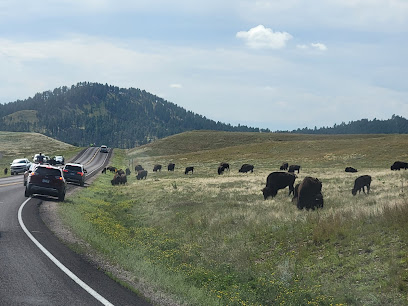
Black Hills Playhouse
Discover the heart of performing arts in South Dakota at Black Hills Playhouse, where nature meets creativity in a stunning outdoor theater setting.
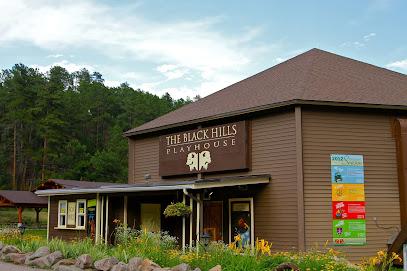
Sylvan Rocks Climbing School and Guide Service
Discover the thrill of rock climbing in Custer, South Dakota at Sylvan Rocks Climbing School, where adventure meets stunning landscapes.
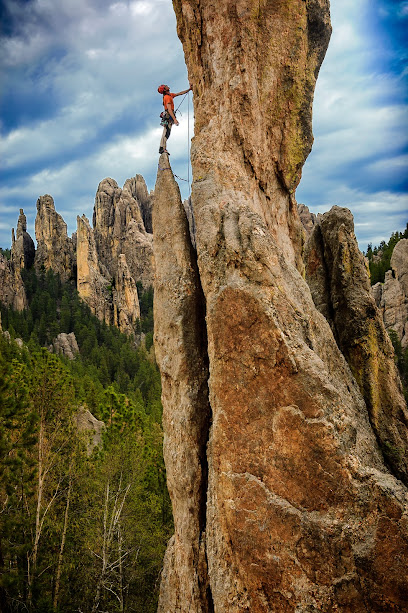
Scovel Johnson Tunnel
Explore the Scovel Johnson Tunnel in Keystone, SD - a historical marvel offering breathtaking views and a glimpse into the region's rich heritage.
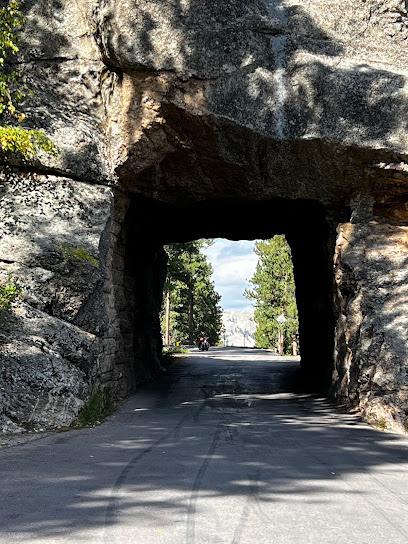
Hayride & Chuckwagon Cookout at Blue Bell Lodge
Discover the enchanting Hayride & Chuckwagon Cookout at Blue Bell Lodge, where outdoor adventure meets delectable Western cuisine in Custer State Park.
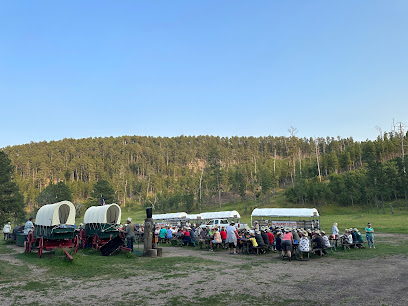
Black Elk Peak Trail
Experience the breathtaking beauty of Black Elk Peak Trail in South Dakota, a must-visit for hiking enthusiasts and nature lovers seeking adventure.

Essential places to dine
Black Hills Sauce & Dough
Experience the best local flavors at Black Hills Sauce & Dough in Custer, SD – perfect after exploring Mount Rushmore and Custer State Park.
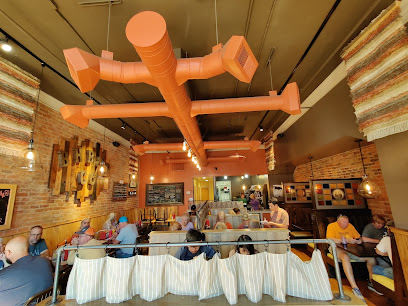
Buglin' Bull Restaurant and Sports Bar
Discover hearty American cuisine and lively sports entertainment at Buglin' Bull Restaurant in Custer, SD – perfect for families and adventurers alike.
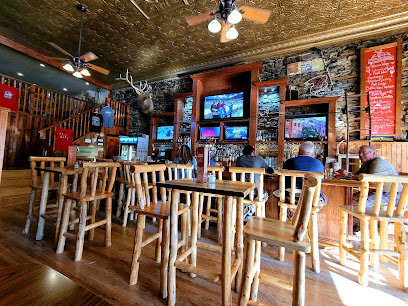
The Custer Wolf - Food & Drink
Experience the heart of American dining at The Custer Wolf - where great food meets warm hospitality in scenic South Dakota.
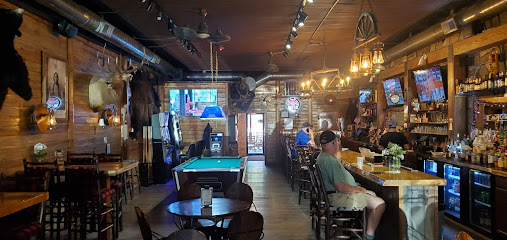
Begging Burro Mexican Bistro
Savor the essence of Mexico at Begging Burro Mexican Bistro in Custer SD – where vibrant flavors meet warm hospitality.
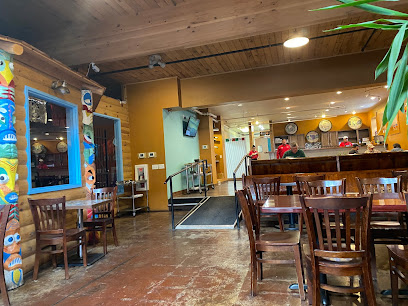
Skogen Kitchen
Discover culinary excellence at Skogen Kitchen in Custer, SD—where local ingredients meet innovative flavors in an inviting atmosphere.
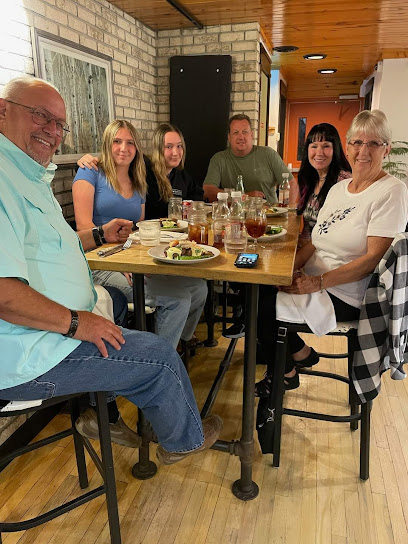
Pizza Mill
Discover delicious pizzas and more at Pizza Mill in Custer – your go-to spot for comfort food in South Dakota.
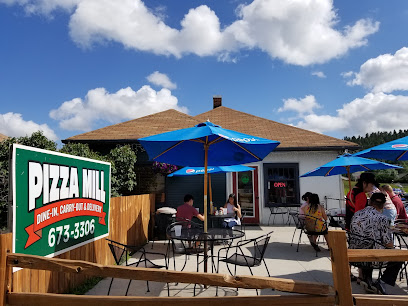
Subway
Enjoy fresh and customizable sandwiches at Subway in Custer—perfect for travelers seeking quick and delicious meals.
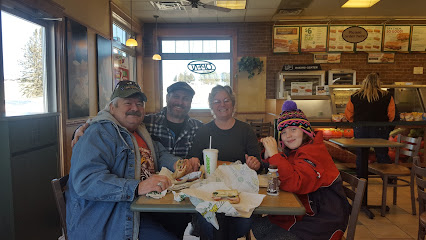
Laughing Water Restaurant
Experience authentic Native American cuisine at Laughing Water Restaurant within Crazy Horse Memorial – where food meets culture amidst stunning landscapes.
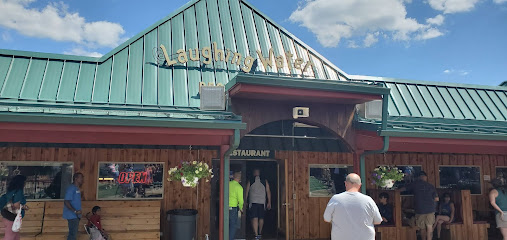
State Game Lodge Restaurant Custer State Park
Experience delightful American cuisine at the State Game Lodge Restaurant while surrounded by the breathtaking beauty of Custer State Park.
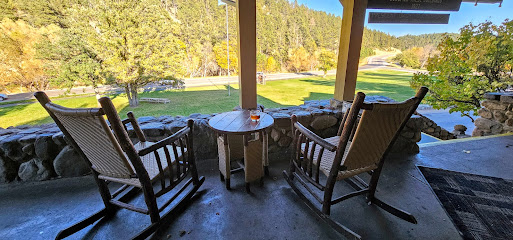
Markets, malls and hidden boutiques
Custer State Park
Discover breathtaking landscapes and diverse wildlife at Custer State Park, South Dakota's premier outdoor destination for nature lovers and adventure seekers.
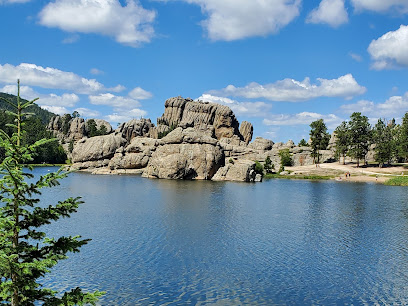
Calamity Jane Coffee Shop and Grill
Discover the perfect blend of coffee, meals, and unique souvenirs at Calamity Jane Coffee Shop and Grill in Custer, South Dakota.
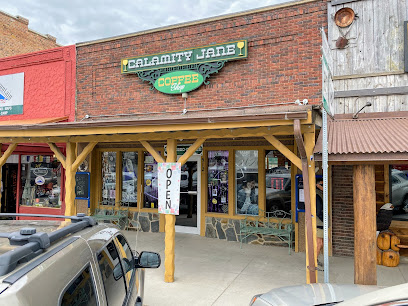
Lynns Dakotamart
Discover Lynns Dakotamart in Custer, SD - your ideal grocery store for local products, snacks, and essentials, all while charging your electric vehicle.
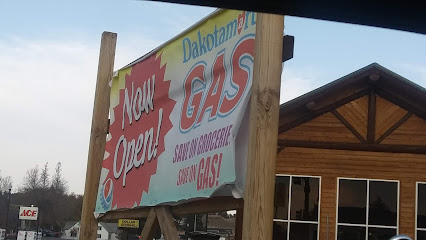
Claw Antler & Hide Co
Discover the charm of Custer, SD, at Claw Antler & Hide Co, your destination for Native American treasures, unique collectibles, and handcrafted jewelry.
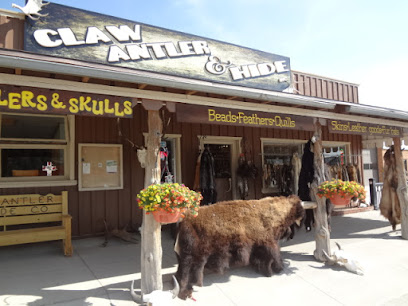
Dave's Rock Shop
Explore the geological wonders at Dave's Rock Shop in Custer, South Dakota – A must-visit for rock enthusiasts and curious travelers alike!
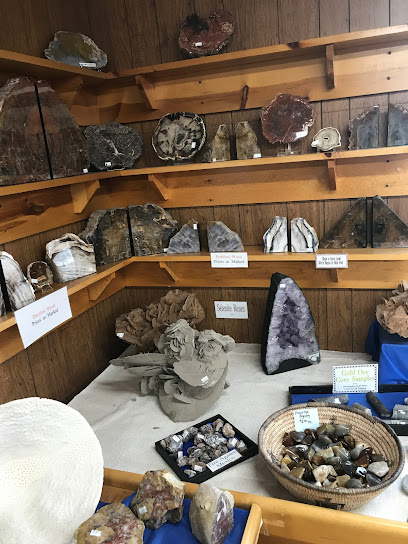
Ken's Minerals & Trading Post
Explore the natural beauty of South Dakota at Ken's Minerals & Trading Post, a premier rock shop with unique treasures for every enthusiast.
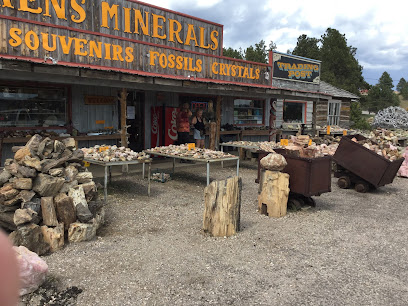
Coolidge General Store
Explore Coolidge General Store in Custer, SD, for unique local goods, souvenirs, and a delightful shopping experience in the heart of the Black Hills.
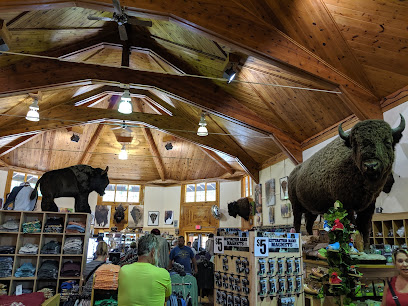
South Dakota Outdoor Shop
Explore the great outdoors with top-quality gear from South Dakota Outdoor Shop, your local adventure hub in Custer.
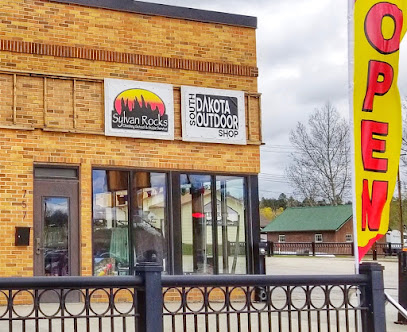
Sylvan Lake General Store & Eatery
Discover the charm of Sylvan Lake General Store & Eatery, where adventure meets local culture in the heart of South Dakota's Black Hills.
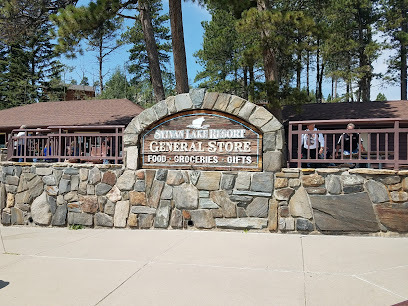
Wild Spruce Market
Explore Wild Spruce Market in Custer, SD - your destination for organic groceries, local brews, and a cozy café atmosphere.
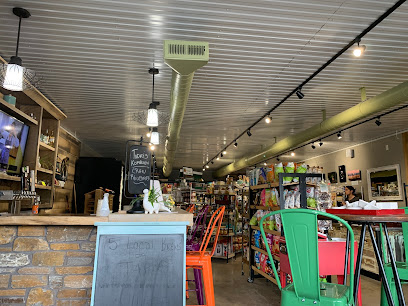
Boyds Antiques
Explore an enchanting array of antiques and collectibles at Boyds Antiques in Custer, SD—where history meets charm.
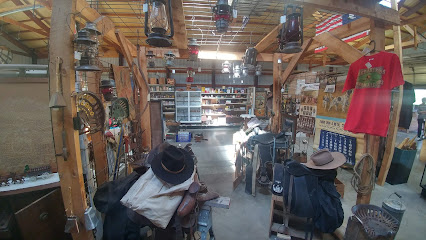
Custer County Candy Co
Discover a world of sweet delights at Custer County Candy Co, Custer's premier candy and ice cream shop, perfect for families and candy lovers alike.

Rock Shop
Explore the enchanting Rock Shop in Custer, SD, where nature's treasures come to life through stunning gemstones and unique minerals.
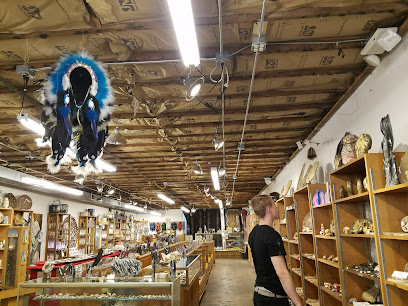
A Walk In the Woods Gallery & Gifts
Explore unique gifts, local art, and handcrafted treasures at A Walk In the Woods Gallery & Gifts in Custer, South Dakota.

Black Hills Power Bikes Rentals & Boutique
Experience the beauty of the Black Hills with bike rentals from Black Hills Power Bikes - your gateway to adventure and exploration.
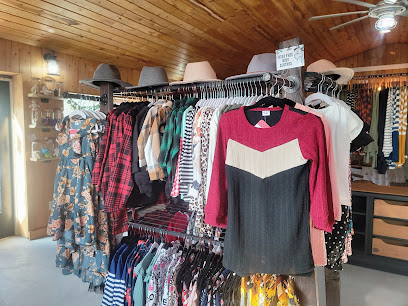
Essential bars & hidden hideouts
Black Hills Sauce & Dough
Discover the culinary delights of Black Hills Sauce & Dough in Custer, SD, featuring renowned burgers and comforting dishes in a charming atmosphere.
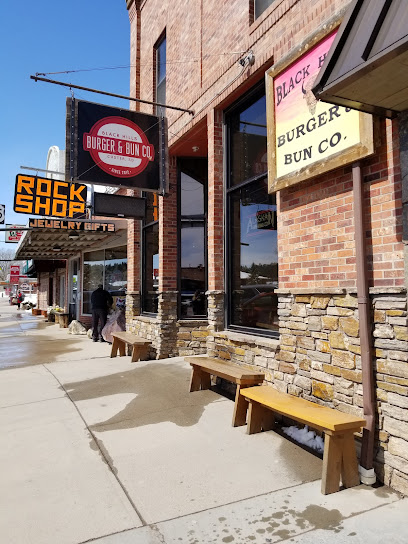
Buglin' Bull Restaurant and Sports Bar
Discover hearty American cuisine and a vibrant sports atmosphere at Buglin' Bull Restaurant and Sports Bar in Custer, South Dakota.
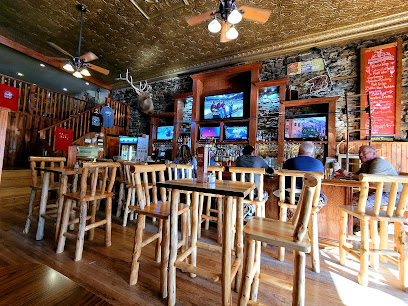
Mt. Rushmore Brewing Company & Pounding Fathers Restaurant
Discover a unique blend of craft beer and delicious comfort food at Mt. Rushmore Brewing Company in Custer, South Dakota.
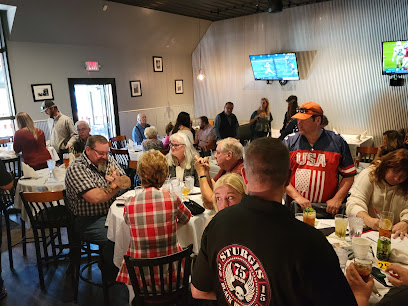
The Custer Wolf - Food & Drink
Discover the flavors of America at The Custer Wolf - a must-visit restaurant in Custer, South Dakota, perfect for families and food lovers.
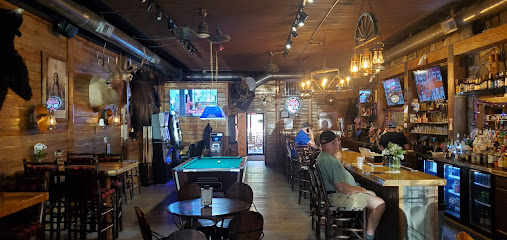
Begging Burro Mexican Bistro
Savor the vibrant tastes of Mexico at Begging Burro Mexican Bistro, a must-visit culinary gem in Custer, South Dakota.

Skogen Kitchen
Experience the flavors of South Dakota at Skogen Kitchen, where local ingredients meet culinary creativity in a cozy setting.
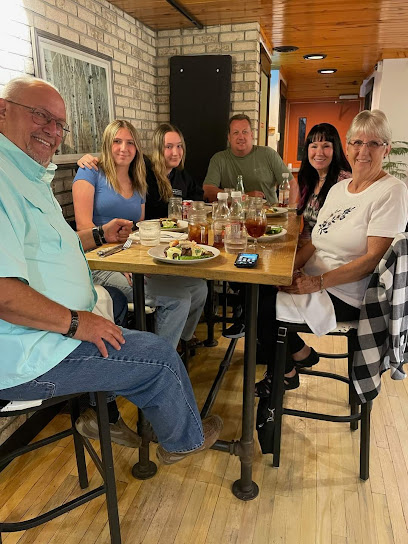
Calamity Jane Coffee Shop and Grill
Discover the charm of Calamity Jane Coffee Shop and Grill in Custer, South Dakota—a perfect blend of coffee, cuisine, and local souvenirs.
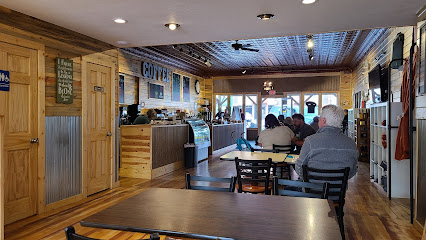
Sage Creek Grille - Now Open!
Experience the best of American cuisine at Sage Creek Grille in Custer, South Dakota, where local flavors meet warm hospitality.
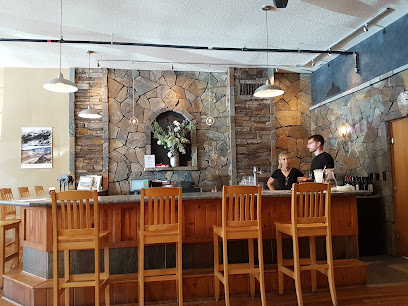
Our Place
Experience the best breakfast in Custer, South Dakota, at Our Place, where delicious food meets warm hospitality in a charming setting.
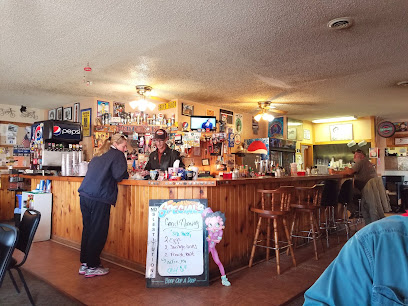
Dairy Queen Grill & Chill
Savor classic fast food and irresistible ice cream treats at Dairy Queen Grill & Chill in Custer, South Dakota, perfect for your post-adventure cravings.
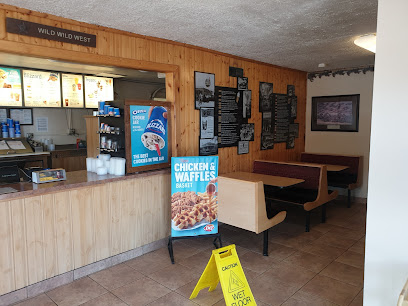
Red Garter Saloon
Discover the vibrant atmosphere and delicious American cuisine at Red Garter Saloon in Keystone, South Dakota - a must-visit bar and grill for every traveler.
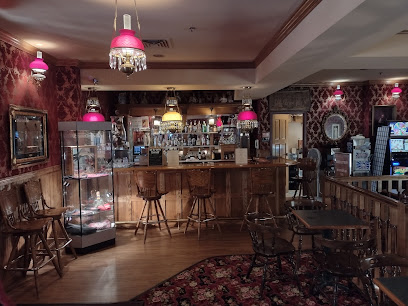
The Custer Beacon
Experience the lively atmosphere of The Custer Beacon, where great food, live music, and unforgettable events come together in Custer, South Dakota.
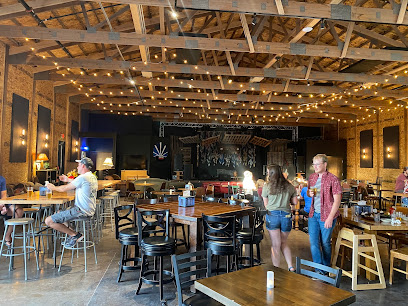
Miner's Cup
Explore the flavors of Miner's Cup, Custer's beloved coffee shop and breakfast destination, where every sip and bite tells a unique story.
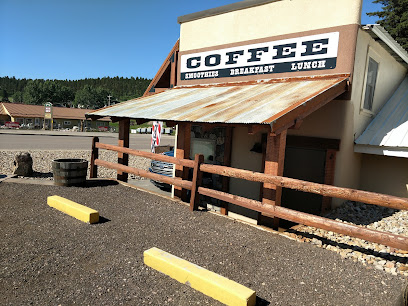
Pizza Hut
Experience a delicious array of pizzas and wings at Pizza Hut in Custer, a perfect stop for families and travelers exploring South Dakota.
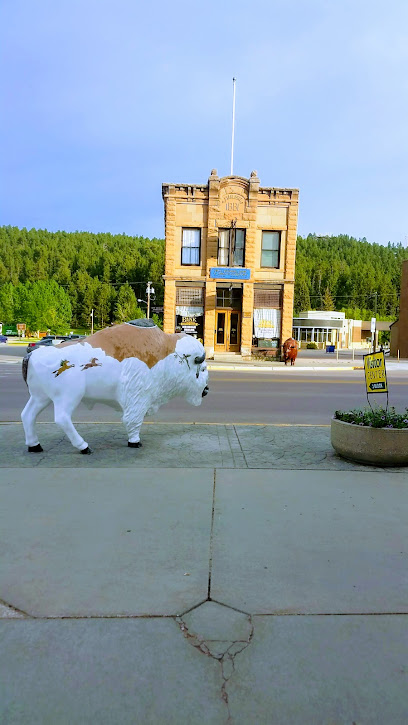
The Frontier Bar & Grill
Experience the best of American comfort food at The Frontier Bar & Grill in Custer, SD, where family-friendly dining meets rustic charm.
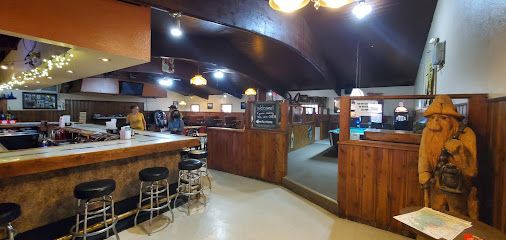
Local Phrases about Custer State Park
-
- HelloHowdy
[HOU-dee] - GoodbyeSee ya later
[SEE yuh LAY-ter] - YesYep
[YEP] - NoNah
[NAH] - Please/You're welcomePlease and thank ya kindly
[PLEEZ and THANK yuh KYND-lee] - Thank youMuch obliged
[MUCH uh-BLAHY-jed] - Excuse me/SorryPardon me
[PAR-dn mee] - How are you?Howdy partner, how you doin'?
[HOU-dee PAHR-tner, how yuh DOO-in?] - Fine. And you?Dandy. How 'bout yourself?
[DAN-dee. How 'bout yur-SELF?] - Do you speak English?Ya speak English?
[Yuh speak ING-lish?] - I don't understandI'm plumb confused
[I'm PLUM kuhn-FYOOZD]
- HelloHowdy
-
- I'd like to see the menu, pleaseCan I take a gander at the grub list, please?
[Can I take uh GAN-dur at the GRUB list, please?] - I don't eat meatI'm a vegetarian
[I'm uh vuh-JAY-tair-ee-un] - Cheers!Bottoms up!
[BOTTOMS up!] - I would like to pay, pleaseCan I settle up, please?
[Can I SET-ul up, please?]
- I'd like to see the menu, pleaseCan I take a gander at the grub list, please?
-
- Help!Send help!
[Send help!] - Go away!Git outta here!
[Git out-uh here!] - Call the Police!Get a hold of the sheriff!
[Get uh hold of the SHER-iff!] - Call a doctor!Fetch a doc!
[Fetch uh doc!] - I'm lostI'm discombobulated
[I'm dis-kuhm-BOB-yuh-lay-ted] - I'm illI'm feeling poorly
[I'm feeling POOR-lee]
- Help!Send help!
-
- I'd like to buy...I reckon I'll take...
[I REK-uhn I'll take...] - I'm just lookingI'm just browsin'
[I'm just BROW-zin'] - How much is it?What's the damage?
[What's the DAM-ij?] - That's too expensiveThat's mighty pricey
[That's MY-tee PRY-see] - Can you lower the price?Can ya do me a favor and drop the tag?
[Can yuh do me uh FAY-vur and drop the tag?]
- I'd like to buy...I reckon I'll take...
-
- What time is it?What's the hour?
[What's the OW-ur?] - It's one o'clockIt's high noon
[It's high NOON] - Half past (10)Ten-thirty
[Ten-THUR-tee] - MorningMornin'
[MORN-in'] - AfternoonAfternoon
[Afternoon] - EveningEvenin'
[EVE-nin'] - YesterdayYest'day
[YES-tuh-day] - TodayToday
[Today] - TomorrowTomorra
[Tuh-MOR-uh] - 1One
[Wun] - 2Two
[Too] - 3Three
[Three] - 4Four
[For] - 5Five
[Fahv] - 6Six
[Siks] - 7Seven
[Sev-un] - 8Eight
[Ayt] - 9Nine
[Nine] - 10Ten
[Ten]
- What time is it?What's the hour?
-
- Where's a/the...?Where's the...
[Where's the...] - What's the address?What's the location?
[What's the loh-KAY-shun?] - Can you show me (on the map)?Can ya point me in the right direction?
[Can ya point me in the right dih-REK-shun?] - When's the next (bus)?When's the next stagecoach?
[When's the next STEYJ-coach?] - A ticket (to ....)A pass (to ....)
[A pass (to ....)]
- Where's a/the...?Where's the...
History of Custer State Park
-
Custer State Park, established in 1912, is one of the oldest state parks in the United States. Named after Lt. Colonel George Armstrong Custer, the park was created to preserve the natural beauty and wildlife of the Black Hills region. Its founding represented a significant effort in conservation and land management in the early 20th century.
-
In 1874, General George Armstrong Custer led an expedition into the Black Hills, which are sacred to the Lakota Sioux. The discovery of gold during this expedition triggered the Black Hills Gold Rush, drawing thousands of miners and settlers to the area and leading to significant conflicts with the Native American tribes who called the region home.
-
In 1914, the state of South Dakota began efforts to reintroduce buffalo to the Black Hills region. Starting with just a few animals, the herd in Custer State Park has grown to nearly 1,500 bison, making it one of the largest publicly owned bison herds in the world. The annual Buffalo Roundup, started in 1965, is a key event in managing the herd and attracts thousands of visitors.
-
During the Great Depression, the Civilian Conservation Corps (CCC) played a crucial role in developing Custer State Park's infrastructure. From 1933 to 1942, CCC workers built roads, bridges, campgrounds, and the iconic Legion Lake Lodge. Their work not only provided employment during tough economic times but also helped shape the park's amenities and accessibility.
-
Completed in 1922, Needles Highway is one of the most scenic drives in the United States. The highway, which winds through granite spires and tunnels, was a significant engineering feat of its time. It was designed by Peter Norbeck, a U.S. Senator and South Dakota governor, who was instrumental in the development of many of the park’s attractions.
-
The Black Hills, including the area now known as Custer State Park, are sacred to the Lakota Sioux and other Native American tribes. The park is rich in Native American history and culture, with numerous sites of spiritual significance. Interpretive programs and educational exhibits within the park help visitors understand and appreciate the deep cultural ties Native Americans have to this land.
-
Custer State Park is a haven for a diverse array of wildlife, including elk, deer, mountain goats, pronghorn antelope, and bighorn sheep. The park's management has focused on sustainable practices to ensure the health and longevity of its ecosystems. Conservation efforts have been critical in maintaining the balance between tourism and wildlife preservation.
-
The Annual Buffalo Roundup, held each fall since 1965, is a unique event where park staff and volunteers herd the park’s bison. This roundup allows for the health assessment and culling of the herd, ensuring the sustainability of the grasslands. It has become a significant cultural and tourist event, drawing visitors from around the world to witness this spectacular display of Western heritage.
Custer State Park Essentials
-
Custer State Park is located in the Black Hills of South Dakota. The nearest major airport is Rapid City Regional Airport (RAP), about 50 miles north of the park. From the airport, you can rent a car or book a shuttle service to the park. If you're driving from other parts of the U.S., Custer State Park is accessible via Interstate 90, with several well-marked exits leading to the park.
-
Once inside Custer State Park, the best way to explore is by car. The park boasts 71,000 acres and a 18-mile Wildlife Loop Road that offers opportunities to see bison, prairie dogs, and other wildlife. Bicycles are allowed on the paved roads, and there are numerous hiking trails for those who prefer to explore on foot. For guided tours, consider booking a jeep safari or horseback riding adventure.
-
The official currency is the U.S. Dollar (USD). Most establishments within and around Custer State Park accept credit and debit cards. ATMs are available in nearby towns such as Custer and Rapid City. It's advisable to carry some cash, especially when venturing into more remote areas where card payment options might be limited.
-
Custer State Park is generally very safe for visitors. However, standard travel precautions apply. Keep your vehicle locked and valuables out of sight. Be cautious around wildlife; maintain a safe distance and never feed the animals. There are no specific high-crime areas targeting tourists, but it's always wise to stay vigilant and aware of your surroundings.
-
In case of an emergency, dial 911 for immediate assistance. The park has several ranger stations and visitor centers where you can get help. It's advisable to carry a first aid kit and have travel insurance that covers medical emergencies. For non-emergency medical issues, the nearest hospital is in Custer, about a 20-minute drive from the park.
-
Fashion: Do wear comfortable, weather-appropriate clothing and sturdy shoes for hiking and outdoor activities. Avoid overly revealing clothing. Religion: Do respect local customs and traditions; some areas may have historical significance. Public Transport: Do note that public transport options are limited; having a car is highly recommended. Greetings: Do greet people with a friendly smile or a handshake. Eating & Drinking: Do try local delicacies and dining establishments in nearby towns. Don't litter; always pack out what you pack in to preserve the park's natural beauty.
-
To experience Custer State Park like a local, visit during the shoulder seasons (spring and fall) to avoid crowds and enjoy mild weather. Participate in the annual Buffalo Roundup if your visit coincides with the event. Bring binoculars for bird watching and a camera for the stunning landscapes. Stop by the local visitor centers for maps, brochures, and insider tips from the rangers.
Trending Landmarks in Custer State Park
-
Black Hills National Forest
-
Jewel Cave National Monument
-
Needles Eye Tunnel
-
Custer State Park Visitor Center
-
Custer State Park Resort
-
Buffalo Safari Jeep Tours
-
Custer State Park Wildlife Loop Road
-
Four Mile Old West Town Museum
-
Welcome to Custer State Park Sign
-
Gordon Stockade Historical Landmark
-
Custer State Park Mt Coolidge
-
Sunday Gulch Trail
-
custer state park
Nearby Cities to Custer State Park
-
Things To Do in Mount Rushmore
-
Things To Do in Rapid City
-
Things To Do in Deadwood
-
Things To Do in Gillette
-
Things To Do in Pierre
-
Things To Do in Sheridan
-
Things To Do in Cheyenne
-
Things To Do in Laramie
-
Things To Do in Sterling
-
Things To Do in Dickinson
-
Things To Do in North Platte
-
Things To Do in Fort Collins
-
Things To Do in Mandan
-
Things To Do in Bismarck
-
Things To Do in Riverton










